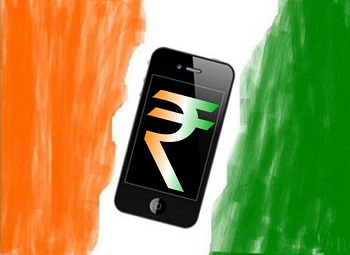The brand is creating a full lineup of wearables as well as digital apps as a part of their broader sports apparel strategy.
Under Armour is currently working on the creation of a full lineup of wearable technology products and complementary mobile apps that are to become a central component of their overall strategy to pass Nike Inc and to take the top global sports apparel spot.
This strategy was made more than clear last week at the Consumer Electronics Showcase (CES 2016).
At that event, Under Armour’s CEO and founder, Kevin Plank unveiled a number of new products that are headed into the brand’s series called “Connected Fitness.” Currently, Nike is holding the lead position in the global sportswear industry and that spot is considered to be quite a solid one. Last year, that brand reported over $30 billion in revenues, with $7.69 billion in sales having been generated exclusively within the most recent fiscal quarter.
However, when it comes to wearable technology, specifically, rivals such as Under Armour are stepping in.
 With a growing range of wearables in the form of high quality apparel and footwear, Under Armour is taking aim and is hoping to become a force to reckon with. It could be that this strategy may one day shake Nike’s stance on the top platform in the market.
With a growing range of wearables in the form of high quality apparel and footwear, Under Armour is taking aim and is hoping to become a force to reckon with. It could be that this strategy may one day shake Nike’s stance on the top platform in the market.
It doesn’t come a surprise that Under Armour feels that one of its top drivers in reaching its $7.5 billion sales target by 2018 is in the use of “Connected Fitness” and wearables. At the same time, many have found Under Armour’s speed of investment into this type of technology to be rather surprising. The reason is that it does leave the impression that the company has jumped from an idea in a business plan right into an actual series of products.
At the core of the brand’s wearable technology plan is the “UA HealthBox”, which includes a sports band upon which pretty much everything else is based. It tracks daily physical activity, heart rate and sleep. The HealthBox also includes a scale that is WiFi equipped and that reads both body weight and fat percentage.
Mobile payments continue to see strong growth throughout India, largely due to the availability of mobile wallets
India’s mobile commerce ecosystem is maturing at a rapid pace. In 2015, consumers throughout the country began realizing the benefits associated with mobile payments technology. The most notable benefit of this technology can be found in mobile wallets, which serve as digital versions of their physical counterparts. These wallets can be used to store a wealth of information, including financial details and special deals being offered by merchants. Mobile wallets have helped power the growth of the mobile payments space in India.
Mobile wallets have become quite popular with consumers
Currently, there are 12 mobile wallets available in India, coming from Paytm, MobiKwik, Oxigen, M-Pesa, and mRupee. Throughout India, some 125 million people use these mobile wallets, with Paytm accounting for the largest share of these consumers. Research and consultancy firm RNCOS recently released a study concerning the mobile wallet market in India. The study found that Indian consumers are quite interested in mobile payments, which has lead to a dramatic rise in the demand for digital wallets.
Mobile wallet market expected to reach $183 million by 2019
 According to the study from RNCOS, India’s mobile wallet market currently stands at $53 million. The market is expected to reach $183 million by 2019. Several companies are beginning to provide mobile payments services to consumers. As more people gain access to smartphones and tablets, they are becoming more active in the mobile commerce space. This has created an incentive for retailers and other businesses to support mobile payments in order to effectively engage consumers that are becoming increasingly mobile-centric.
According to the study from RNCOS, India’s mobile wallet market currently stands at $53 million. The market is expected to reach $183 million by 2019. Several companies are beginning to provide mobile payments services to consumers. As more people gain access to smartphones and tablets, they are becoming more active in the mobile commerce space. This has created an incentive for retailers and other businesses to support mobile payments in order to effectively engage consumers that are becoming increasingly mobile-centric.
More consumers are gaining access to smartphones and bank accounts
Some 400 million new consumers will have smartphones and bank accounts in the near future, making India a very attractive mobile commerce market. Retailers and financial institutions are expected to take advantage of this by offering new services that appeal to the needs of consumers. Competition may ensure that innovation comes to the mobile payments market, allowing mobile wallets to become more capable than they are currently.
 With a growing range of wearables in the form of high quality apparel and footwear, Under Armour is taking aim and is hoping to become a force to reckon with. It could be that this strategy may one day shake Nike’s stance on the top platform in the market.
With a growing range of wearables in the form of high quality apparel and footwear, Under Armour is taking aim and is hoping to become a force to reckon with. It could be that this strategy may one day shake Nike’s stance on the top platform in the market.
 According to the study from RNCOS, India’s mobile wallet market currently stands at $53 million. The market is expected to reach $183 million by 2019. Several companies are beginning to provide mobile
According to the study from RNCOS, India’s mobile wallet market currently stands at $53 million. The market is expected to reach $183 million by 2019. Several companies are beginning to provide mobile 